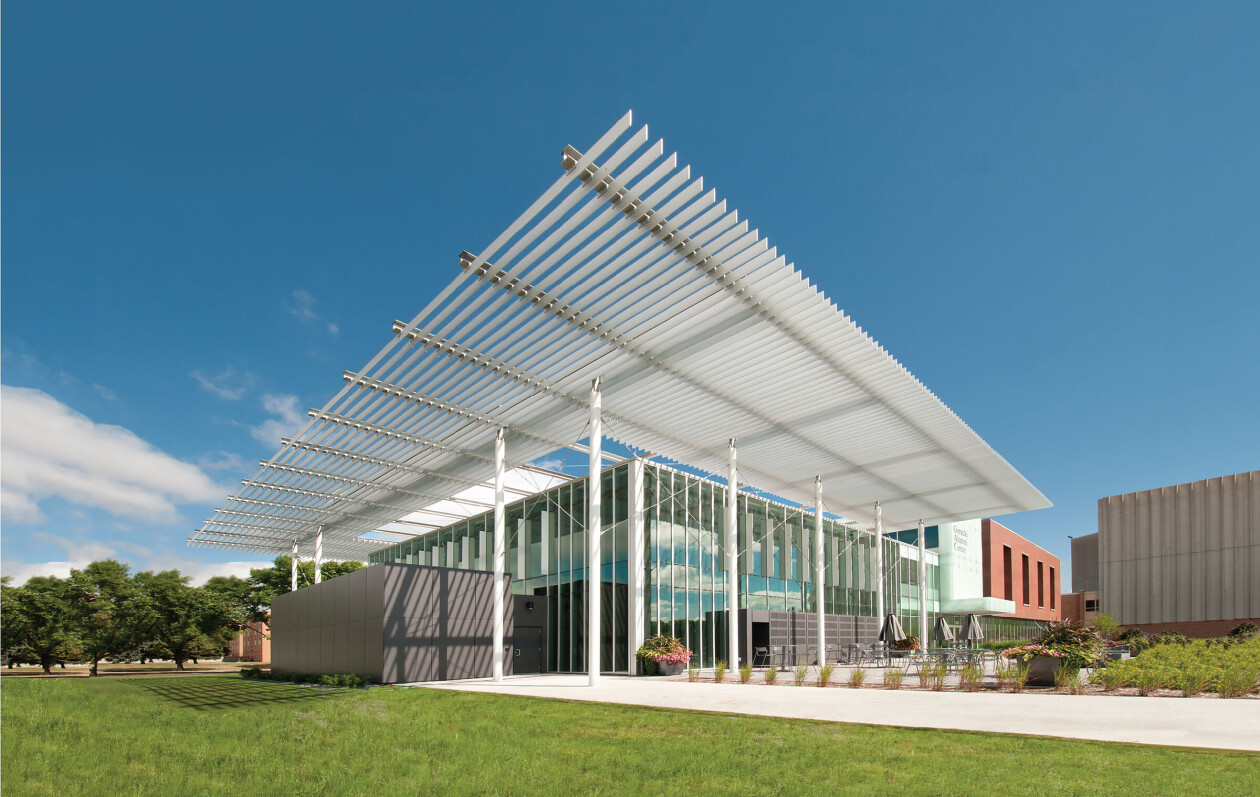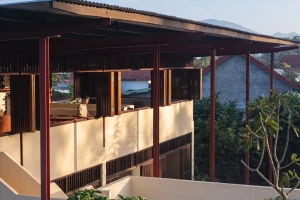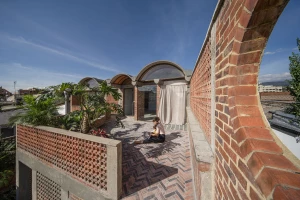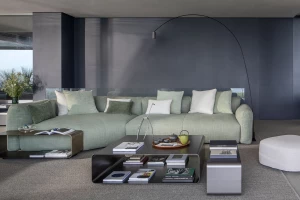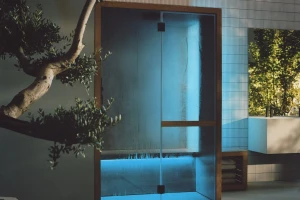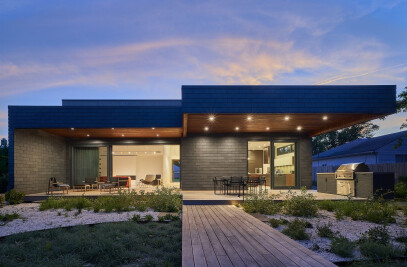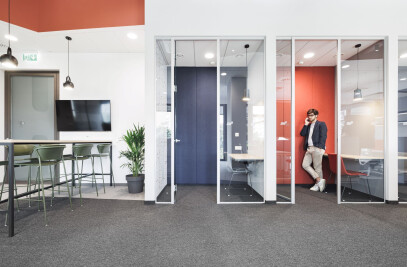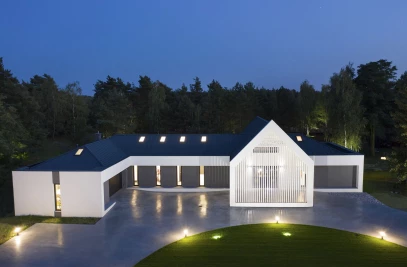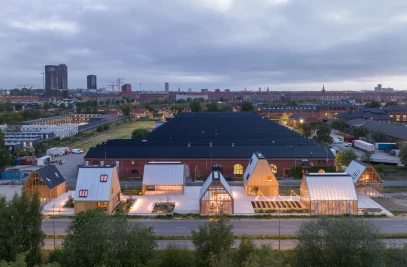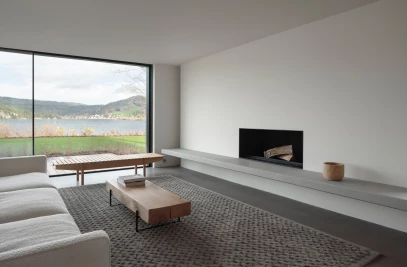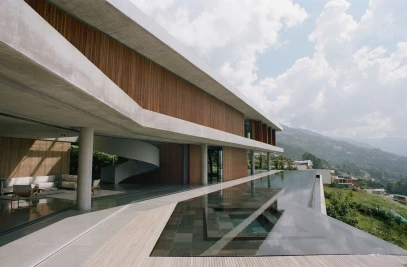*Explore these topics and more in SketchUp’s webinar series about connected design workflows for architects.
Award-winning architects JLG have leveled up their commitment to Architecture 2030's sustainability challenge by reimagining their workflows around a data-driven, holistic, and firmwide process. Leveraging SketchUp, they perform sophisticated performance analyses and embed sustainability considerations throughout the design process.
Across the globe, fifteen of the twenty largest global architecture and engineering firms have now adopted the 2030 Challenge. The goal is to transform the role of the built environment from being a core contributor of greenhouse gas emissions to being a central solution to the climate crisis. The Challenge outlines a bold proposal: all new buildings and major renovations should be carbon neutral by 2030.

Longtime sustainability champions JLG have integrated the 2030 Challenge across their entire project process and portfolio. Founded in 1989, JLG is owned by its 150 employees who work across 13 North American offices on a variety of projects. The firm has achieved ambitious certifications such as the first LEED Platinum building in North Dakota and LEED Gold and Silver for projects ranging from research centers to residential developments. JLG is currently pursuing the Living Building Challenge Full Certification, Fitwell, LEED Platinum, the AIA Framework for Design Excellence, and exceptional energy performance for its new office in Grand Forks, North Dakota.
JLG views sustainability as inextricably linked with design excellence. In recent years, the firm reconfigured its workflow to incorporate early performance modeling at the start of all its projects. Since 2020, every JLG project has an FDE-10 (Framework for Design Excellence) spreadsheet, and every 2030 project has an associated energy model with established performance targets. The American Institute of Architects (AIA) framework lists ten design principles and considerations; defines 21st century best practices; and encourages design professionals to work toward a zero-carbon, fair, resilient, and healthy built environment.
To help facilitate this transition, JLG deployed the software tools SketchUp and Sefara firmwide. All staff received training and had Sefaira energy and daylight simulation plugins installed on their desktop. Every JLG project has a designated team member who performs analyses and communicates high-performance targets to clients. All team members can be engaged in this process as everyone at JLG is trained in-house on EUI metrics; this ensures individuals understand key factors for optimizing energy performance. These steps help JLG operationalize sustainability by fusing it within daily workflows, creating actionable steps for each team member's practice.

SketchUp is an ecosystem of applications that help AEC professionals design, document, and collaborate more seamlessly. In addition to its prolific 3D modeling program, SketchUp offers a range of compatible extensions to support rendering, AR/VR visualization, importing and modeling on point clouds, and more. Its building performance analysis tool, Sefaira, forms a crucial part of JLG’s workflow.
Sefaira analyzes 3D models within SketchUp, which have been simplified to the essentials required for energy and daylight analysis, and then runs simulations powered by industry-accredited analysis engines to give valuable insights on performance. Sefaira provides crucial feedback early on in the design process when critical decisions are still being made.
It also offers insights into water, carbon, and renewable energy potential. Designers and architects can explore unknown or overlooked opportunities for efficiency with these early considerations. Together, these software programs allow customization per project, process standardization using baselines and shared best practices, and an opportunity to optimize the design process for insight and innovation.

In the past, JLG had outsourced performance analytics to external energy modeling consultants after designs were finalized. This method is expensive (with energy modeling specialists typically charging between $7,500 - $40,000 to complete a detailed energy model) and limited in scope. The resulting models help design mechanical systems or perform validation analyses. However, they often are performed at the tail end of the design process and function more like an add-on than an integrated component.
Sefaira's energy models use SketchUp model data, deliver feedback in the architect's native design environment, and empower team members to perform their analyses on multiple project iterations. Along with encouraging innovation, using Sefaira also saves time; it takes one to four hours to set up an early phase concept model and establish an Energy Use Intensity (EUI) target. To optimize the design, JLG will spend an additional two to eight hours per design phase. For reference, traditional energy modeling can take 100-200 hours.
Whereas other software programs typically emphasize tracking logistics and project progress to date, the SketchUp suite offers real-time design analytics oriented to the range of outcomes the project process may take. Besides providing time and cost savings, this significantly mitigates risks.

Sefaira allows for individual project customization and incorporates industry presets such as ASHRAE and Part L. JLG deployed a custom script that launches Sefaira when SketchUp launches, so the energy and daylight plugin is automatically turned on. The firm also developed starter models for each primary building type to standardize repeat tasks. Best practice parameters and building code specifications are included as presets in the files, ensuring consistency.
Users can compare massings, layout, and envelope specification options to shortlist the right concepts. The program's web app provides additional functionality, such as the ability to study natural ventilation and assess HVAC type and sizing, as well as operating costs. Designers can then use these insights to make decisions during the schematic and conceptual phases to optimize cost savings.
Sefaira can translate energy and cost information into compelling visuals and charts that clearly and succinctly showcase performance metrics. Designers can tangibly present the benefits of their design to stakeholders, highlight the value of net-zero goals, and offer at-a-glance concrete financial payback metrics.

As a project progresses, the models are kept up to date to match project development and provide easy collaboration and sharing between teams. SketchUp models are leveraged later in the design process by exporting IDF files or using a SketchUp file as a linked file in Revit during construction documentation.
Patrick Thibaudeau, Principal Sustainability Officer at JLG, explains the benefits of harnessing the combined power of the SketchUp and Sefaira platforms for both internal and external operations:
"JLG has a process to capture lessons learned so that they can be applied to future projects and help identify financial ROI. We have produced nearly 200 energy models in less than a year, and we have seen the benefits, including improved design and positive financial return. One [project] example has a projected ROI of over $200,000 of net positive revenue after 30 years of equipment life. Using Sefaira, we find that performance informs form. As we conduct design analysis, the performance simulation gives useful information that designers can leverage when determining building form.”

Integrating SketchUp and Sefaira into professional workflows means designers can deliver conceptual and detailed drawings and renderings and conduct performance analyses from day one. Performance assessments become a core part of an iterative design process.
Feedback offers insights into how a building might perform, which drivers might have the most performance impact on a specific project, and inspiration for material or structural choices. Designers and teams can test ideas and boundaries, learning about different building factors such as R-value, daylight, massing, orientation, air infiltration, and glass performance.
SketchUp allows designers to take a proactive approach to performance: designers task the algorithm with theoretical calculations across a suite of scenarios and use those calculations as insight for design iterations. Best practices can be implemented before money and time have been spent, offering a greater understanding, more succinct cost-benefit analyses for clients, and greater room for creative design solutions.

Using SketchUp and Sefaira, JLG realized a mindset shift to position sustainability at the core of its design process. This move may inspire the broader architecture community to rise to meet the current climate crisis. Beyond the time savings offered by powerful analytics, these modeling software help deliver capital and operational cost savings and high building performance quality. SketchUp's agility allows for streamlined, connected, multidisciplinary design workflows which empower teams to work more efficiently and creatively. By leveraging the right tools and knowledge and optimizing opportunities for frictionless collaboration, JLG has developed an integrated approach that delivers optimal financial, aesthetic, and ethical value to clients and communities.
*SketchUp is offering a free webinar series for Archello readers that delves into a complete and connected multidisciplinary design workflow specifically for architecture exteriors, large-scale interiors, and sustainability projects. The on-demand and live webinars feature cutting-edge architecture firms like JLG and HKS Architects, who share their tips and tricks to elevate your workflows with SketchUp.
Watch the webinar series on-demand.
